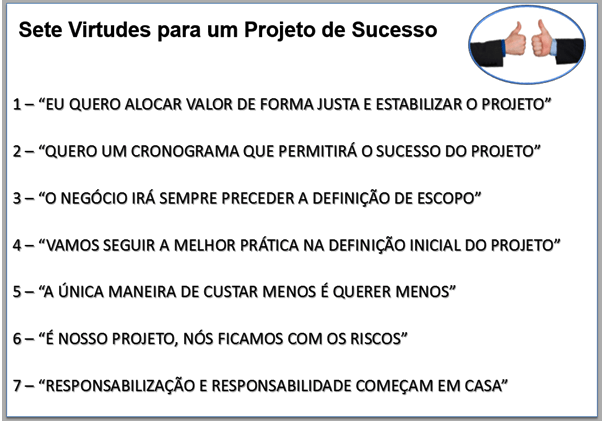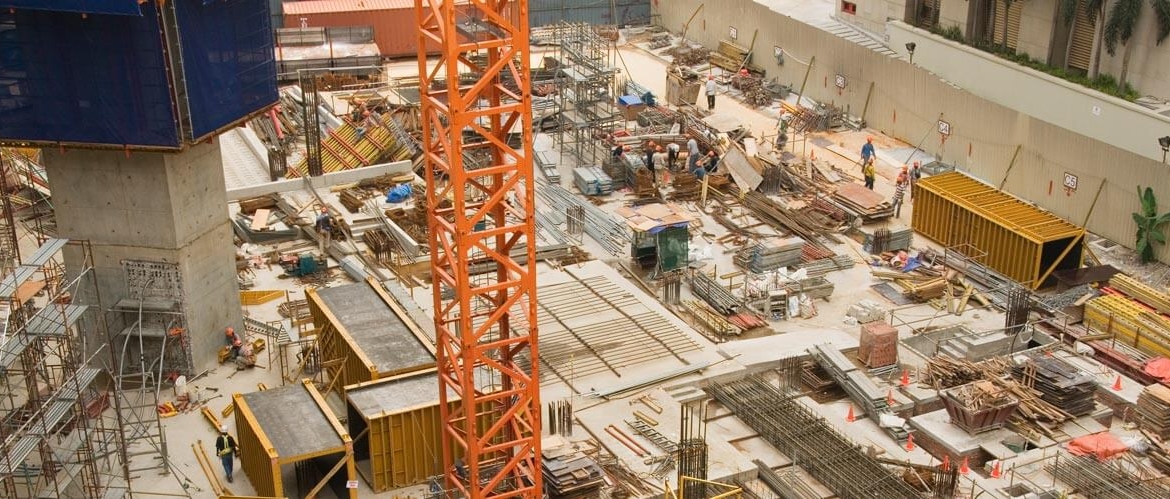Major engineering and construction projects are certainly a fertile place for delusions and disappointments and so you need to know how to avoid a similar fate. To prevent your project from failing, it is very beneficial to understand what we call the “Seven Capital Sins of Major Engineering Projects” that are very common attitudes that lead to these projects failing. The following is a summary of these attitudes:

Capital Sin 1 – The Greed
“I want the whole project for me! “
In the past greed was considered a bad thing, but nowadays it is tolerable in our society. It turns out that in the world of projects, greed still works the same way as before and can literally destroy your project.
Greed creates a natural imbalance in how costs and rewards are allocated to the project and something viewed as unfair by stakeholders is naturally doomed to failure before it even begins.
During the development phase, the investor, or owner, needs to worry about how risks and rewards are being allocated and thus align all interests to a common goal. Too much greed causes a natural turbulence in the workforce that will be responsible for meeting the agreed goals. Ask yourself: Am I sharing the value generated by the project fairly between stakeholders? Can my contractor or my service providers make a reasonable amount of money? Are my employees getting a sizable share of the project’s value? If you answered no to any of these questions, you are currently flirting with a disaster.
Capital Sin 2 – The Unreal Schedule
“This project is for yesterday! “
Patience is really a virtue and this is also true when it comes to working schedule. Pressure on the timeline condemns more projects than any other factor alone.
When there is pressure to move the project fast, shortcuts are created and the terrain becomes fertile for opportunists. No project should be deliberately slow, but taking risks with timelines on large engineering projects is a fool’s game. Do not forget that there is a standard speed in the market in which projects are developed and executed successfully.
If a major construction project does not fit into a normal and reasonable schedule, the conclusion is clear: The project is not feasible!
Capital Sin 3 – The project leading the business details
“Do not worry, we’ll think about the details of the deal later! “
To be successful, the project and the business can be developed together, but preferably the business settings have to come first. The reason is that the business is responsible for defining the boundary conditions and project functionalities what will serve to define its scope and clear definition of scope is key to success.
Remember, the business leads the project; the project can not conduct business.
Capital sin 4 – Cut costs and development deadlines
“Why do we have to spend so much at the beginning? “
It can be very tempting to save on the cost of developing a major engineering project, but that is a costly mistake.
Every professional, already with some experience, knows that reducing the initial definition phase of a project is a problem and the first thing that is done in large engineering projects is exactly to cut the scope of the initial phases of definition of these projects.
Making a plan and an appropriate scope definition in the initial phase of the project takes from 2% to 5% of the total project costs, but if it does not, the disaster can easily reach 100% of the initial cost and deadlines.
If investors do not have the stomach to lose the values of the initial definition phase of the project, they should not be investors in capital-intensive projects.

Capital Sin 5 – The Cost Reduction Task Force
“We need to cut 20% of these costs! “
One of the most unproductive exercises in major engineering projects is the “task force of cost reduction.”
It is very common to hear: “You (project team) have to point these pencils right and reduce that budget by a few million reais.” Honestly, I would very much like to have a pencil like that.
It must be understood that cost is inevitably linked to the scope and changing the cost is necessary to change the scope of the project and consequently its functionalities.
Project teams through such dire situations as these will merely make up productivity, material costs, equipment prices, labour costs, and so on. with the purpose of presenting the desired situation by the head.
Capital Sin 6 – The Contractor’s Risk
“The contractor must take all the risk; they are the ones who are running the project! “
An interesting fact is that large engineering projects are usually contracted in the lump-sum model and often these projects exceed their costs.
This is because investors try to pass on all risks to the contractor and no matter how good the contract is, the risk of the project in practice is ALWAYS on the investor.
Despite a well-drafted contract with all the guarantees issued, in practice, almost no risk is passed on to the contractor because as a service provider, it paralyzes its work when the services do not give the necessary return forcing the investor to reach an agreement that makes it feasible again contract.
Contractors are variable cost companies and do not by their nature have sufficient assets to withstand all the risks of major engineering projects.
Capital Sin 7 – The Blame is the Project Manager
“Send out those project managers # $ @ $ ^! which exceeded the budget / term of our projects “
Tapping into project managers who extrapolated budget and project deadlines is certainly a sport dating back to the Great Pyramid era.
I’ve never met a project manager who starts the day wondering, “What can I do today to destroy my project?”
Honestly, as we have discussed to this point, large excesses of costs and deadlines should rarely be placed in the account of the project manager.
You must remain very vigilant about these seven deadly sins, especially if you are developing or managing a major engineering and construction project.
The best way to improve the chances of success of your project is to follow what we call “The Seven Virtues for a Successful Project,” which are as follows:

And finally, an incentive to change:
“One should consider that there is nothing more difficult to perform, more doubtful to succeed or more dangerous to handle than to initiate a new order of things. That is why the Reformer has as enemies all those who take advantage of the old order and find weak defenders in those who of the new order benefit. “
The Prince, Chapter 6 – Niccolo Machiavelli (1469, 1527)
Also read the first part of this article: “Why do large construction projects fail so often?”
Read the article on blogdaliga.com.br



